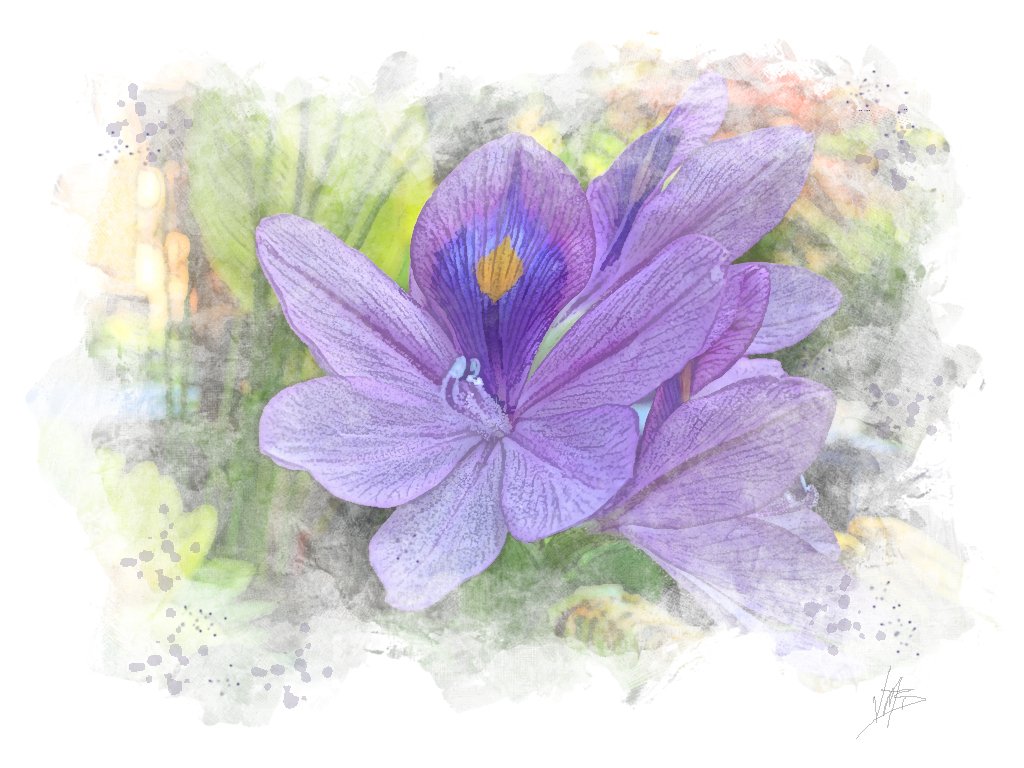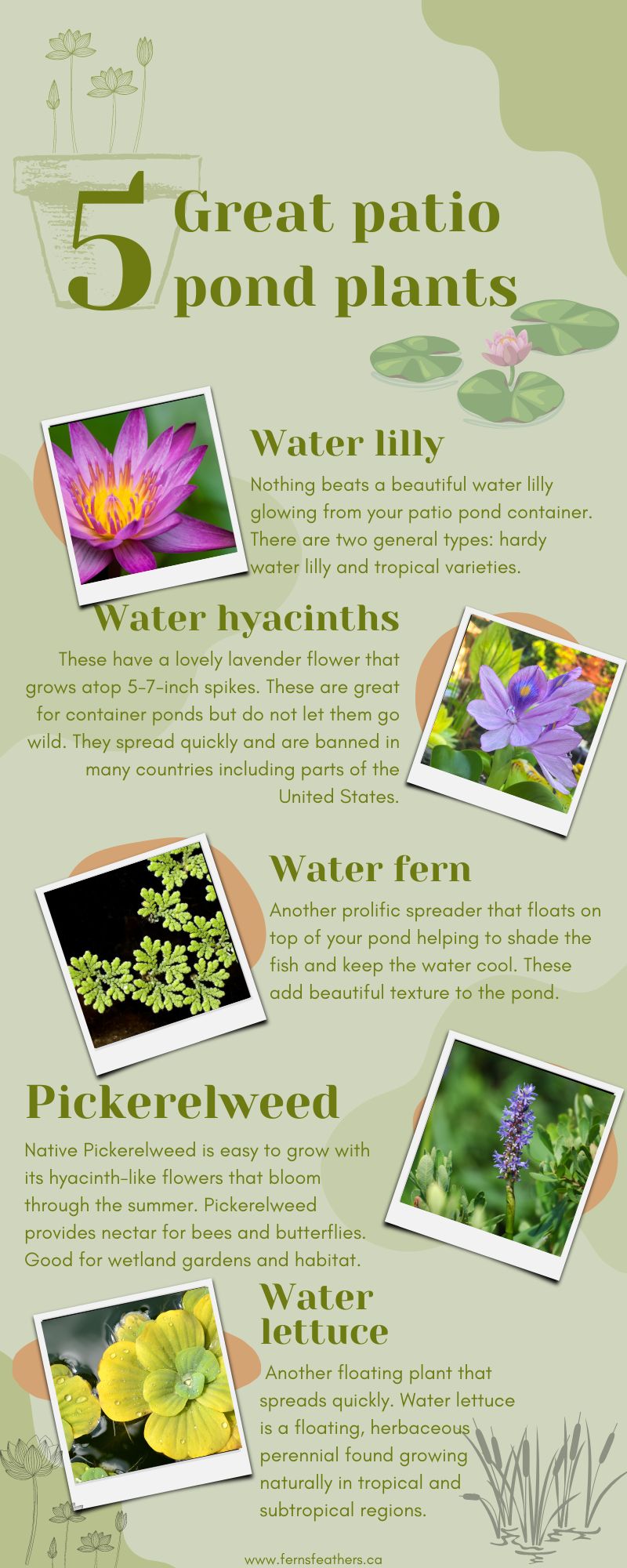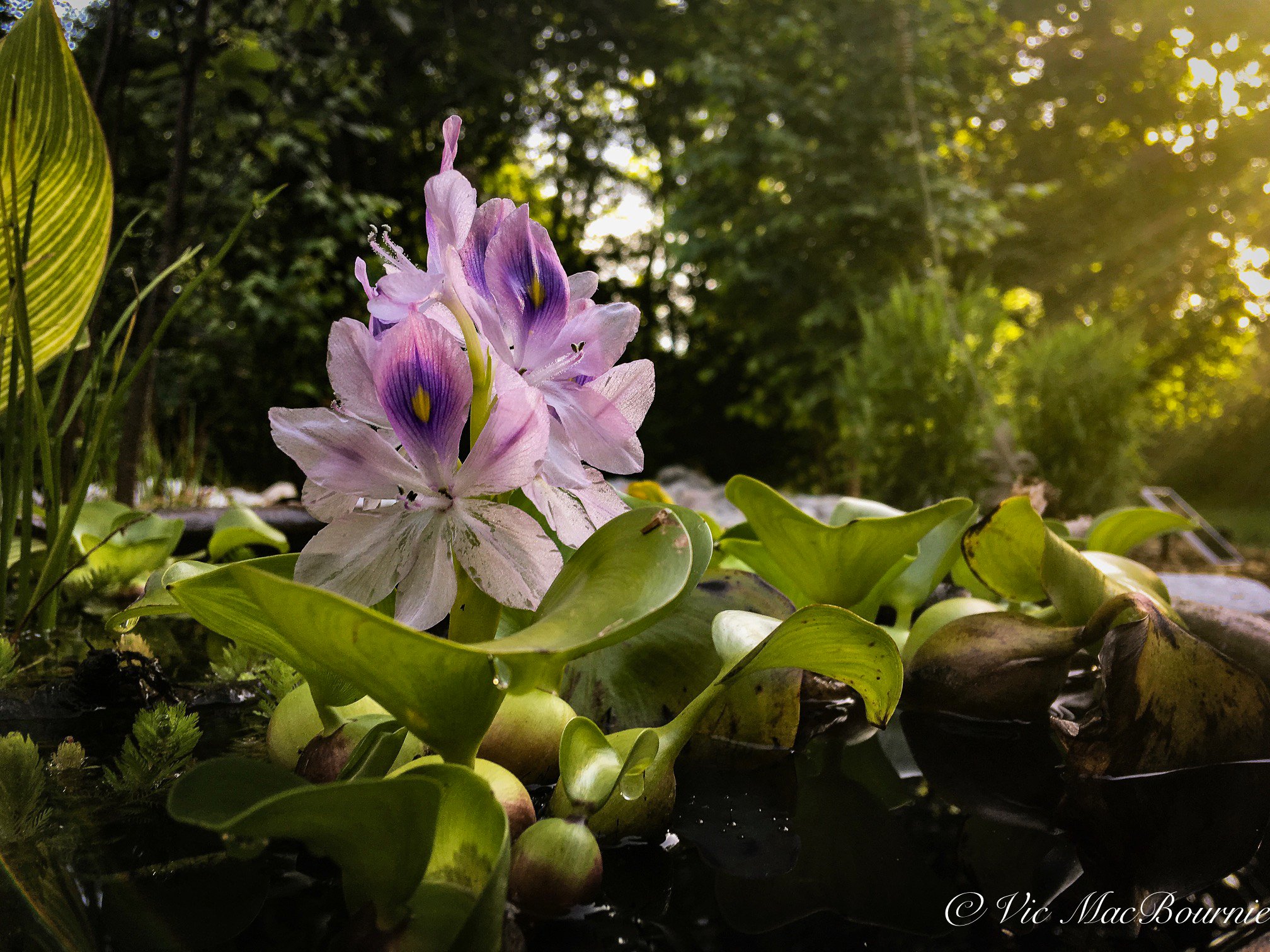Water Hyacinth is favourite in patio pond
The water hyacinth always has a place in our container pond where it flowers profusely and quickly spreads doing an excellent job keeping the water clear of algae.
Water hyacinth is banned in many parts of the world
Not a summer goes by when I don’t pick up a couple of water hyacinths (Pontederiaceae spp.) for our small container pond. Not only do these floating plants boast beautiful purple flowers that bloom regularly throughout the summer, their strong root mass helps to oxygenate the pond water and their thick, fibrous leaves shade the garden pond helping to control green algae growth.
It can provide great cover for fish and can be useful for spawning fish in a small pond.
Water hyacinth is a floating, aquatic plant in the pickerel-weed family that was imported into North America in 1884 for an exposition in New Orleans.
These floating plants have thick oval leaves and a bulbous stalk. It’s quick to multiply with the mother plants sending out multiple runners which then creates daughter plants. It reproduces through pollination by bees or through self cloning.
In our small garden container pond, the plants are more or less left alone by animals. Once or twice a year one of our neighbourhood raccoons or skunks decides to dig in the patio pond and remove a few of the hyacinth bulbs after taking a bite or two out of them. But, the plants just keep going.
For more on garden ponds, be sure to check out my post on garden ponds vs garden container ponds.
The fact the water hyacinths are quick to multiply means only a few are needed to quickly cover our patio container pond.
Water hyacinths are extremely invasive in temperate climates
Despite the positive attributes listed above, water hyacinth is not a plant you want to add to a large, natural pond, especially if you live in a warmer climate. They are among the fastest growing plants on earth and their fast growth can not only swallow up your pond, they can cause real damage to natural waterways in more temperate climates.
They have been known to clog up waterways, slow the movement of water and destroy much of the natural habitat.
The plant is considered invasive in many parts of the world.
In parts of asia, experts have measured the plant growth of up to 15 feet a day. It’s particularly problematic for many waterways and is considered invasive in many parts of North America, Europe, Africa, Asia and Australia.
It is originally native to the waters of South America in the Amazon basin.
In some parts of the world it is used as a source of compost – which is where our plants go at the end of each summer. It can be a good source of nitrogen and phosphorous in the compost.
In parts of Africa, the fleshy part of the plant is used as an animal feed, while the roots are used in fertilizer.
It’s purple-pink bloom rises above the plant usually 5 to 7 inches.
Besides the flower, Water Hyacinths reproduce vegetatively by stolens running off the mother plant.
The plants are not hardy and will quickly die once the temperatures drop.
You can overwinter one or two of the plants by placing them in a fish tank or large bowl inside the house for use the following year.
The plant is actually used in wastewater treatment plants to remove nitrogen and potash. It can also remove many heavy metals and other toxins from contaminated water.
In parts of asia it is used heavily in cooking.
Water ferns and duckweed are good substitutes for water hyacinths
It’s important to use plants to cover much of the surface of the water of your pond to keep algae growth under control. A handful of water fern will have similar growth and cover the surface quickly, as will duckweed.
Duckweed is a tiny green plant that covers both natural and garden ponds quickly.






